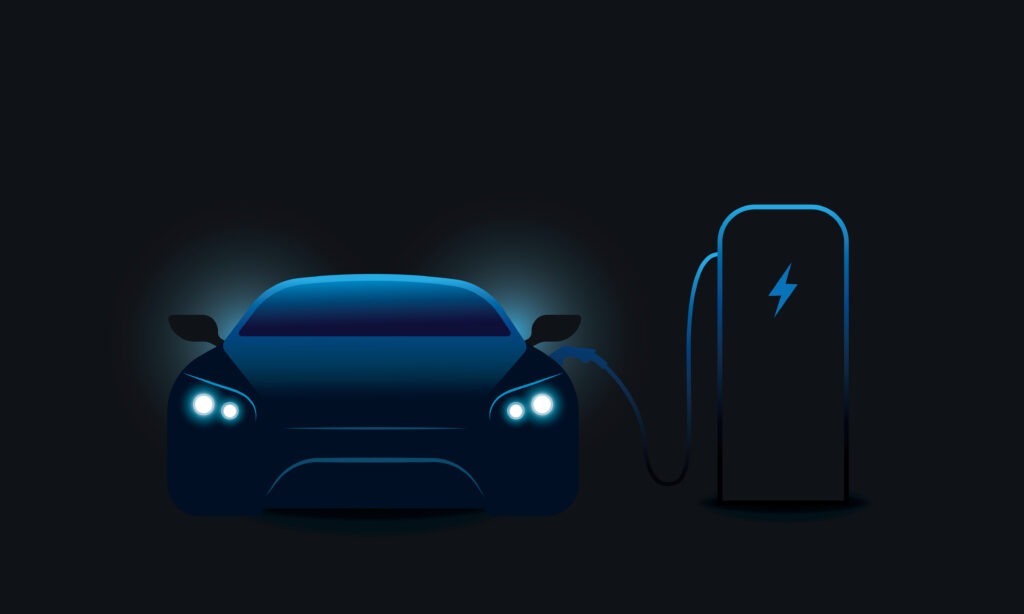03 October 2025

With so many hurdles to overcome, is there still hope for electric vehicle (EV) markets around the world? Neil King, head of forecasting at EV Volumes, outlines what is expected to happen to sales with Autovista24 editor Tom Geggus.
EV Volumes expects global light vehicle sales, made up of passenger cars and light-commercial vehicles (LCVs), to grow by 3.6% in 2025. This exceeds the expected 1.1% increase outlined in the previous update,
The reason for this improved outlook is resilient demand in China and the non-Triad region. This forecast factors in US automotive tariffs. However, these are likely to have a smaller impact, with carmakers taking a more cautious approach with their pricing strategies. Other factors taken into consideration include political instability, conflicts, energy prices, and inflation.
Global EV deliveries, including battery-electric vehicles (BEVs) and plug-in hybrids (PHEVs), are forecast to increase by 24.5% this year. This means 22.1 million units are expected to hit the roads. The new forecast is up from the 19.7% growth expected in the previous update.
The improved outlook comes despite some governments phasing out purchase incentives and tax breaks amid mounting national debt, particularly in Europe.
The global EV share of the light-vehicle market is projected to grow to 24% in 2025 and 26.7% in 2026. In the following years, this is predicted to rise to 42% in 2030, before hitting 64.1% in 2035, and 83% in 2040. However, budget pressures and policy shifts may threaten investment in incentives and charging infrastructure.
European EV barriers
Western and Central Europe’s light vehicle market is currently facing a barrage of barriers to growth. There is uncertainty about changing goods tariffs, conflict in Ukraine, and tensions in the Middle East concerning European light-vehicle sales.
On top of this, there are the ongoing risks of increasing inflation, oil prices, and energy costs. Furthermore, the September 2025 OECD Economic Outlook predicts that GDP in the Euro area will only grow 1.2% in 2025. This is slightly higher than the 1% growth in the previous forecast. However, this rate is projected to retreat to 1% in 2026, down from 1.2% predicted previously.
Due to weaker goods exports to the US and a struggling services sector, LCV demand was affected by trade frictions and tariffs. Passenger vehicle sales quickly followed suit. Political uncertainty and rising debt levels are also curtailing light-vehicle demand.
More positively, the EU proposed tariff reductions in August 2025 to implement the EU-US trade agreement. This would see duties on the automotive sector reduced from 27.5% to 15%. The EU-Mercosur and EU-Mexico free-trade agreements have also strengthened the competitiveness of the region’s automotive industry. The UK has also negotiated a more favourable 10% tariff rate with the US.
A lower EV outlook
Reflecting the barriers the region faces, EV Volumes has lowered its European light-vehicle sales outlook for 2025. Volumes are now expected to decline by 1.1% year-on-year by the end of 2025. This is lower than in the previous forecast, which projected a 0.3% decline.
The 14.8 million units now expected this year are far below the 18 million registered in 2019. EV Volumes does not expect the European market to return to that level within the current forecast horizon, up to 2040. A 1.9% growth in light-vehicle sales in 2026 hinges on a complex interplay of regulatory and economic factors.
Stricter EU CO2 emissions targets are driving EV sales alongside lower prices, discounting, and the launch of new models. Additionally, the EU Commission plans to adopt a binding regulation in 2026 on vehicle recycling. This will require manufacturers to use more recyclable or reusable materials in new cars and vans.
Meeting the lower emissions targets and circularity requirements will necessitate a major increase in EV sales. In turn, this could even trigger a price war, supported by lower lithium costs. Manufacturers may also restrict the supply of internal combustion engine (ICE) vehicles to avoid costly emissions fines.
Schemes and incentives
On a positive note, Italy announced €597 million in funding for a scrappage scheme. Meanwhile, Germany is considering the reintroduction of BEV incentives, although this is uncertain due to the coalition government and prevailing economic conditions.
In July 2025, the Electric Car Grant was launched in the UK. EV subsidies were increased for low-income households in France. Social leasing and a conditional extra financial incentive for electric models were launched at the end of September. Spain has also reactivated subsidies under the MOVES III scheme.
Meanwhile, more affordable BEVs are entering the market, and leading Chinese carmakers are planning further moves in the region.
PHEV registrations have exceeded expectations so far this year. This has been driven by eased CO2 targets, expanded Chinese PHEV offerings, and delayed launches of low-cost BEVs. Additionally, the UK’s ZEV mandate relaxation means hybrids can be sold until 2035, exempting them from the 2030 new-car ICE ban.
As a result, EV sales in Europe are expected to grow 26.7% year-on-year in 2025 to 3.88 million units. This accounts for 26.2% of total light-vehicle sales, up from 20.5% in 2024 and 21.3% in 2023. BEV volumes are forecast to grow 23.8% year-on-year, accounting for 67.1% of the 2025 BEV and PHEV mix. Meanwhile, PHEV sales are expected to increase by 32.8%.
So, what do new model launches, lower prices, and stricter emissions targets mean in the following years? EVs are forecast to reach a 30.6% share of European light-vehicle sales in 2026 and 36.5% in 2027.
The forecast for 2035 and beyond includes some tolerance for timing interpretations of the new-car ICE sales ban. It also allows for exemptions for vehicles that may be deemed unsuitable for full electrification.
Chinese resilience
Automotive demand and economic resilience have remained firm in China. The OECD recently upgraded the country’s 2025 GDP growth outlook to 4.9%. Meanwhile, EV Volumes has upgraded its light-vehicle market forecast for China. A total of 27.7 million sales are now expected by the end of 2025, equating to year-on-year growth of 6.7%.
This year has seen China’s scrappage programme extended beyond the original January 2025 deadline. However, it has now been suspended in several cities. This could disproportionately reduce demand for EVs given their higher bonus levels.
However, the country has recently announced a plan to stabilise growth in the automotive industry. Accordingly, China is targeting sales of approximately 15.5 million new energy vehicles (NEVs) this year. Alongside this, it is aiming for a 48% NEV penetration rate.
The country also pledged to reduce its greenhouse gas emissions at the latest UN General Assembly. By 2035, China will look to reduce its emissions by up to 10% from their peak levels. This marks the nation’s first commitment to absolute emissions cuts.
Chinese OEMs continue to launch new PHEVs and extended-range electric vehicles (EREVs). Meanwhile, BEVs are regaining momentum, bolstered by aggressive discounting initiated by BYD.
As such, BEVs are forecast to account for 60.1% of EV sales in 2025 and about two thirds by 2031. EVs are forecast to represent 51.6% of light-vehicle sales in 2025, rising to 73% in 2030, then 88.3% in 2035, and 95.7% in 2040.
Forecast volumes are based on retail sales, not wholesale. This excludes exports and inventory build-up, which explains differences from the typically higher wholesale-based figures published by other agencies.
Tariffs, bills and incentives
On 26 March, the US government announced 25% vehicle import duties. However, a two-year ‘import adjustment offset’ program has been implemented for manufacturers producing vehicles in the US.
According to J.D. Power, average new car prices in the US are expected to increase by 5% by the end of 2025. This could lead to an 8% drop in sales. However, many manufacturers did initially absorb the extra costs.
The ‘One Big Beautiful Bill’ act was signed into law in July 2025, ending EV tax credits on 30 September. Any resulting pull-forward effect so far in 2025 is expected to be offset by weaker demand in the final quarter.
Funding for Canada’s iZEV programme ran out in January 2025, with BEV uptake falling and no replacement scheme announced. In response to economic and trade pressures, the Canadian federal government also paused the 2026 Electric Vehicle Availability Standard. This mandated that 20% of new light-duty vehicle sales be zero-emission. The government initiated a 60-day review to assess and potentially adjust future targets.
EV Volumes has updated the 2025 light-vehicle sales forecast for Northern America, covering the US and Canada. The region is now expected to record just over 18 million sales, up 1.2% year-on-year. However, the year-on-year growth outlook was adjusted downward for 2026 to 2029.
The EV share is now expected to reach 10.1% in 2025 and rise only modestly to 10.2% in 2026. This is primarily supported by a more affordable Tesla model. EV shares are forecast to climb to 21.4% in 2030, before achieving 39.8% in 2035, and 59.1% in 2040. This is well below the predicted global EV share of over 80% in 2040.
Non-triad markets weather tariffs
Light-vehicle sales in non-Triad markets have weathered the economic impact of US trade tariffs better than expected. Accordingly, EV Volumes increased its 2025 sales growth forecast to 4.8%.
Japan increased the budget for EV subsidies under the Clean Vehicle Energy Subsidy Programme in early 2025. Meanwhile, India cut import duties for premium EVs as part of a new manufacturing programme in June 2025.
Indonesia introduced VAT exemption for low-emission vehicles in January 2025 and a reduced VAT rate. Finally, in response to US tariffs, South Korea launched temporary stimulus measures. This included financing support and higher EV subsidies.
Budget constraints driven by economic concerns may limit future incentive schemes. Several countries have also implemented, or plan to introduce, new tariffs on imported vehicles. This includes a 50% tariff in Mexico and up to 30% duties in Turkey. Indonesia is also looking to end incentives for imported, completely built-up BEVs, starting in 2026.
Against this backdrop, the EV share in non-Triad countries is forecast to reach 6.7% in 2025. This equates to around 2.1 million units. This percentage is projected to reach 16.9% in 2030, then 41.8% in 2035, and 76.8% in 2040. The region generally lags the global adoption curve by about five years.








